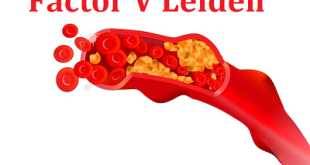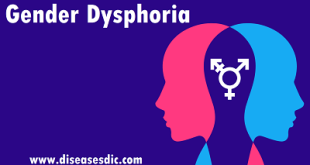What is gangrene?
Gangrene, which refers to tissue death caused by a severe shortage of blood supply or serious bacterial infection, occurs in lower extremities. It is more common in the toes than other parts of the body. Gangrene tends to happen more often among people with peripheral artery disease, a common circulatory problem in which narrowed arteries reduce blood flow to the limbs.
People with diabetes and peripheral artery disease are especially vulnerable to complications such as gangrene, because, in addition to poor blood circulation, they often have decreased sensation in their feet due to nerve damage. If an injured toe goes unnoticed and blood supply is inadequate to help heal the wound, tissue death may occur.
Gangrenous tissue typically becomes discolored, ranging from pale purple to black. The skin may become dry, hard and shriveled, with a clear line separating the dead tissue from healthy tissue. If an infection is present, the area may look swollen or form blisters filled with fluid on the skin. There’s often a foul-smelling odor.
Gangrene epidemiology
Gangrene occurs equally in men and women. Type I necrotizing fasciitis occurs most commonly in patients with diabetes and patients with peripheral vascular disease. It is the most common form of necrotizing fasciitis in the general population. Type II necrotizing fasciitis has an annual incidence of 5 to 10 cases per 100,000 in the US. Approximately half of the cases of streptococcal necrotizing fasciitis occur in young and previously healthy people.
The incidence of gas gangrene in the US is nearly 3000 cases annually. Severe penetrating trauma or crush injuries associated with interruption of the blood supply are the usual predisposing factors. Spontaneous gas gangrene caused by Clostridium septicum may be more common than trauma-associated gangrene, caused by other Clostridium species. Among drug abusers, C perfringens, C sordellii, and C novyi are most commonly involved.
Types of gangrene
Dry gangrene
All of your organs (such as your liver, heart, and muscles) need oxygen to function properly and survive. The oxygen is carried to different parts of your body by your blood. Dry gangrene occurs when one of your body parts isn’t getting enough oxygen. Eventually, the body part will start to deteriorate and die. With dry gangrene, the skin is closed and there is no evidence of infection.
Dry gangrene
Wet gangrene
Wet gangrene happens when your body tissues become infected with some type of bacteria. The tissues react to the presence of the bacteria by growing moist and breaking down. This process causes the death of your tissues. It’s more of an emergency than dry gangrene because of the possibility of infection spreading to other parts of the body.
Wet gangrene
Gas gangrene
Bacteria called Clostridia cause gas gangrene. These bacteria create an infection that causes gas bubbles and toxins to develop inside the affected area. The resulting gases cause tissue death. This type of gangrene can be fatal, but it’s rare.
Gas gangrene
Gangrene risk factors
You are more likely to develop gangrene if you have a history of certain medical conditions, including:
Arteriosclerosis (hardening of the arteries) in your legs or arms
- Raynaud’s disease
- Diabetes
- Blood clots
- Appendicitis
- Hernia
Some other physical events could increase your risk of gangrene. You may be more likely to develop this condition if you:
- Have lowered immunity because of a medical condition or cancer treatment
- Have recently had surgery
- Have suffered severe frostbite or a head injury, animal bite, or serious burn
- Have been hurt in a traumatic way that includes the crushing of body tissues
- Have had an injection of promethazine hydrochloride that led to tissue damage
Smoking, drinking alcohol, and using intravenous drugs may also add to your risk of developing gangrene.
Causes of gangrene
Gangrene happens when a body part loses its blood supply. This may happen from injury, an infection, or other causes. You have a higher risk for gangrene if you have:
- A serious injury
- Blood vessel disease (such as arteriosclerosis, also called hardening of the arteries, in your arms or legs)
- Diabetes
- Suppressed immune system (for example, from HIV/AIDS or chemotherapy)
- Surgery
Symptoms of gangrene
Dry gangrene which is the most common type of gangrene, usually manifests in the following form.
- Firstly, the affected part turns red
- Then it becomes cold, pale and numb (though some people might experience pain).
- Furthermore, the body part may begin to change colour from red to brown to black without treatment. The dead tissue may shrivel up and fall away from the surrounding healthy tissue.
Wet gangrene progresses much faster than dry gangrene. Its symptoms include:
- Swelling and redness of the affected body part
- Pain which can often be severe
- Foul-smelling discharge of pus from a sore in skin
- Affected area will change colour from red to brown to black
The symptoms of Gas gangrene are as follows:
- Feeling of heaviness followed by severe pain
- In most cases of gas gangrene, pressing skin near the affected area will produce a crackling sound caused by a build-up of gas; producing the feeling of crushing fine tinfoil.
Gangrene complications
Complications depend on where in the body the gangrene is, how much gangrene there is, the cause of the gangrene, and the person’s overall condition. Complications can include:
- Disability from amputation or removal of dead tissue
- Prolonged wound healing or the need for reconstructive surgery, such as skin grafting
Gangrene diagnosis and test
A number of tests and investigations can be carried out to confirm the diagnosis of gangrene. These include:
Blood tests to check for an infection.
Fluid or tissue culture: Where a small tissue or fluid sample from the affected area is tested to find out which bacteria are responsible for the condition and determine the most effective antibiotic to treat it with
Blood cultures: Where a sample of blood is taken and put into special culture bottles and placed in a warm environment (incubated) to encourage the growth of bacteria so they can be examined further
Imaging tests: A range of imaging tests, such as X-rays, magnetic resonance imaging (MRI) scans or computerised tomography (CT) scans can be used to confirm the presence and spread of gangrene; these tests can also be used to study blood vessels so any blockages can be identified
Surgery: A surgical examination under anesthetic may be necessary to confirm a diagnosis of gangrene deeper inside the body
Gangrene treatment and medications
Treatment will depend on your symptoms, age, and general health. It will also depend on how severe the condition is.
Antibiotics: These medicines can be used to kill bacteria in the affected area. They are used only to treat wet gangrene.
Surgery to remove the dead tissue: When dead tissue is limited to a specific part of the body, leaving healthy surrounding tissue is called debridement. It can help keep the gangrene from spreading to healthy tissues nearby. In cases where the gangrene is advanced, widespread, and not able to be cured otherwise, a finger, toe, or even a limb may need to be amputated.
Maggot debridement: This is a nonsurgical alternative to traditional debridement. During this procedure, clean fly larvae are placed on the affected area. They eat away dead tissue and remove bacteria. This is a painless procedure.
Hyperbaric oxygen therapy: During this procedure, you are placed in a special pressurized chamber that gives oxygen at high pressures, forcing more oxygen into the affected area. This may speed up healing and help kill bacteria. This treatment works very well in people who develop gangrene from diabetic foot ulcers.
Vascular surgery: If your gangrene is caused by poor blood flow, your healthcare provider may recommend surgery to improve your circulation. People whose gangrene is a result of a blocked artery, for example, may have bypass surgery or angioplasty to fix the problem.
Prevention of gangrene
The best weapon against gangrene is prevention.
- Keep wounds clean and sterile by cleaning all wounds thoroughly with an antiseptic solution.
- Watch for signs of infection, such as pus, redness, swelling, or unusual pain.
- Consult a health-care provider if any wound becomes infected.
- People with diabetes should control their blood-sugar levels with proper medication.
- Education about proper foot care is vital for people with diabetes. They should routinely examine their feet for any signs of injury or change in skin color. Any small injury should be immediately cared for. They should keep their nails trimmed and wear comfortable well-fitting shoes.
 Diseases Treatments Dictionary This is complete solution to read all diseases treatments Which covers Prevention, Causes, Symptoms, Medical Terms, Drugs, Prescription, Natural Remedies with cures and Treatments. Most of the common diseases were listed in names, split with categories.
Diseases Treatments Dictionary This is complete solution to read all diseases treatments Which covers Prevention, Causes, Symptoms, Medical Terms, Drugs, Prescription, Natural Remedies with cures and Treatments. Most of the common diseases were listed in names, split with categories.








poor circulation in my feet
Consult a doctor as soon as possible.
can you get gangrene from having a colostomy bag?
No, it doesn’t occur.
my feet feels cold& numb around the toes,,,,,,why?
It may be due to the nerve pinging at the toe. But please consult a doctor for better results.
I’m feeling pain in my toe since last month
Consult a doctor to diagnose the causes.
my foot suffers with itching and swelling with pus. how can I cure it to normal. please help.
kindly contact a nearby general practician for proper diagnosis of your issues in the foot.
gangren ka madicine kya hai
Please read it from the treatment section. The medicines are mentioned.